
Three assassins walked into a bar deep in the Brazilian Amazon one night last October. Beers flowed, tongues loosened and the men were overheard bragging about their latest job. “We’re looking for this Orlando bloke. We’ve come to kill him,” one of the inebriated hitmen is said to have declared, according to a tipoff conveyed to their target.
The Orlando in question was Orlando Possuelo, one of the Indigenous defenders who has been seeking to carry on the work of his colleague Bruno Pereira since Pereira was killed along with the British journalist Dom Phillips near the Javari valley Indigenous territory last June.
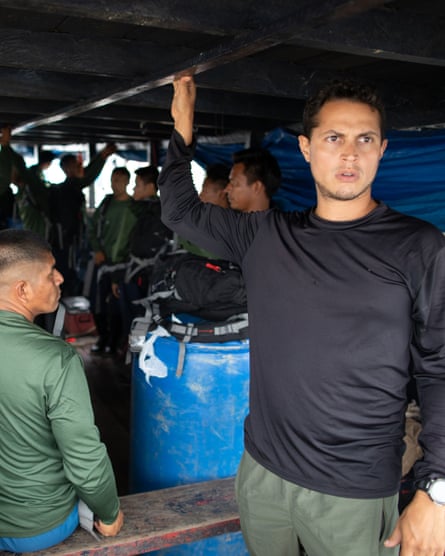
The planned killing did not come to pass. Who ordered it is unclear. But Possuelo, who has seen two close associates murdered in the past four years, admitted the warning left him shaken. “Normally, I’m fairly relaxed about the threats … but there are days you wake up feeling a bit haunted,” he said.
One year after the killings of Pereira and Phillips – which laid bare the environmental devastation inflicted under Brazil’s former president Jair Bolsonaro – Indigenous leaders and non-Indigenous allies such as Possuelo are intensifying their battle to protect the world’s greatest rainforest and the Indigenous peoples who have lived there since long before European explorers arrived in the 16th century.
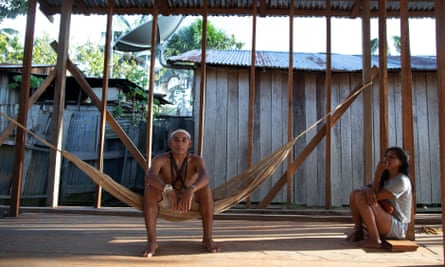
The activists are defiant in the face of the many dangers of confronting the environmental criminals and organised crime groups who have tightened their grip on the Amazon region.
“If they kill me, I’ll go to heaven, because I’m defending my territory,” said Daman Matis, 27, who helps to police a riverside government protection base on one of the waterways that illegal goldminers use to invade protected Indigenous lands.
Since taking power in January, Brazil’s new president, Luiz Inácio Lula da Silva, has strengthened government efforts to protect Indigenous communities and the environment. It follows four years of chaos and destruction under Bolsonaro, during which deforestation and land invasions soared.

Six Indigenous territories have been officially recognised, while federal police operatives, environmental special forces and army troops have been deployed to the Amazon in an attempt to reassert control and send a message to the world about Brazil’s commitment to eradicating illegal deforestation and fighting the climate emergency.
What is the Bruno and Dom project?
ShowWhat is the Bruno and Dom project?
Bruno Pereira, a Brazilian Indigenous expert and Dom Phillips, a British journalist and longtime Guardian contributor, were killed on the Amazon’s Itaquaí River last June while returning from a reporting trip to the remote Javari Valley region.
The attack prompted international outcry, and cast a spotlight on the growing threat to the Amazon posed by extractive industries, both legal and illegal, such as logging, poaching, mining and cattle ranching.
A year after their deaths, the Guardian has joined 15 other international news organisations in a collaborative investigation into organised crime and resource extraction in the Brazilian Amazon. The initiative has been coordinated by Forbidden Stories, the Paris-based non-profit whose mission is to continue the work of reporters who are threatened, censored or killed.
The goal of the project is to honour and pursue the work of Bruno and Dom, to foreground the importance of the Amazon and its people, and to suggest possible ways to save the Amazon.
Who was Bruno Pereira?
Pereira, 41, was a former employee of the Indigenous agency Funai where he led efforts to protect the isolated and uncontacted tribes who live in the Brazilian Amazon. After being sidelined from his post soon after the far-right president Jair Bolsonaro came to power, Pereira went to work with the Javari Valley Indigenous association Univaja, helping create Indigenous patrol teams to stop illegal poachers, miners and loggers invading their protected lands.
Who was Dom Phillips?
Phillips, 57, was a longtime contributor to the Guardian who had
lived in Brazil for 15 years. A former editor of the dance magazine Mixmag, he developed a deep interest in environmental issues, covering the link between logging, mining, the beef industry and the destruction of the Amazon rainforest. His reporting brought him into contact with Pereira, and in 2018 the pair took part in a 17-day expedition deep into the Javari Valley. In 2021 he took a year off to start writing a book, titled How to Save the Amazon. His return to the Javari was to have been the last reporting trip for the project.
What is the Javari Valley?
Sitting on Brazil’s border with Peru and Colombia, the Javari Valley
Indigenous Reservation is a Portugal-sized swathe of rainforest and
rivers which is home to about 6,000 Indigenous people from the Kanamari, Kulina, Korubo, Marubo, Matis, Mayoruna and Tsohom-dyapa groups, as well as 16 isolated groups.
It is also a hotspot for poachers, fishers and illegal loggers,
prompting violent conflicts between the Indigenous inhabitants and the
riverside communities which fiercely opposed the reservation’s
creation in 2001. Its strategic location makes it a key route for smuggling cocaine between Peru, Colombia and Brazil.
What happened to Pereira and Philips?
On 2 June 2022, Pereira and Phillips travelled up the Itaquaí River from the town of Atalaia do Norte to report on efforts to stop illegal fishing. Two days later, members of the Indigenous patrol team with whom Pereira and Phillips were travelling were threatened by an illegal fisher. Early on 5 June, the pair set out on the return leg before dawn, hoping to safely pass a river community that was home to several known poachers.
They never arrived, and after a search by teams of local Indigenous activists, their remains were discovered on 15 June.
Three fishers are being held in high-security prisons awaiting trial for the killings: brothers Amarildo and Oseney da Costa de Oliveira and a third man, Jefferson da Silva Lima.
Federal police have alleged that a fourth man, nicknamed Colombia, was the mastermind of the killings.
“[We want] to inaugurate a new era in the region,” said Humberto Freire, the head of Lula’s newly created federal police department for the environment and the Amazon.
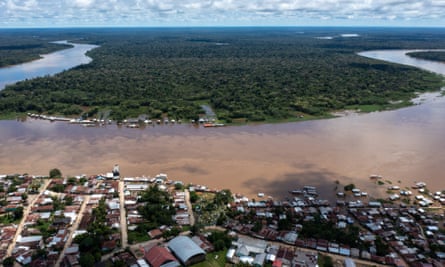
In Atalaia do Norte, the remote river town to which Pereira and Phillips were travelling when they were ambushed, a colossal floating police base has taken up position, with a name hammering home that desire. Nova Era (New Era), read the golden yellow letters stamped on to the base’s black metal hull.
Some local people believe the campaign is working. “So much has changed under Lula’s government,” said Rubeney de Castro Alves, who runs a hotel overlooking the Javari River where Phillips and Pereira stayed before starting their final mission. “I’m not just saying that because I voted Lula. It’s because the reality is that things have really changed.”

For all the good intentions, there is still fear, uncertainty and violence in the Javari territory, which is home to the world’s largest concentration of isolated Indigenous groups. Indigenous communities and their non-Indigenous champions remain under siege.
“I’d really love you to tell the story of how everything’s fine now and everything has changed. This is the story I’d like you to be telling,” Possuelo told the Guardian’s reporters as they returned to the region for the first time since last year’s killings as part of a collaborative investigation coordinated by Forbidden Stories paying tribute to the victims and the causes they held dear. “But the reality is that nothing’s changed.”
Possuelo’s bleak assessment does not mean the Javari’s Indigenous activists are giving up the fight. Far from it.

A new generation of defenders
Phillips, a longtime Guardian contributor, was killed while reporting on the embryonic work of an Indigenous patrol group that Pereira and Possuelo had helped create called the Javari Valley Indigenous Monitoring Team, or EVU as it is known in Portuguese.
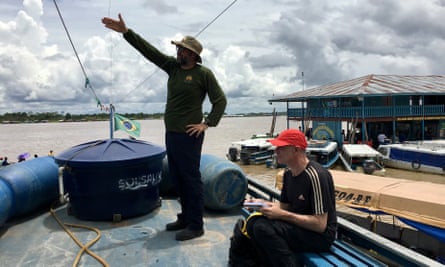
Its mission involved equipping Indigenous scouts with technology, such as drones, GPS trackers and cameras. That equipment – coupled with their peerless knowledge of the rainforest – would help them detect crimes taking place within their territory, which is home to about 6,000 Indigenous people from the Kanamari, Kulina, Korubo, Marubo, Matis, Mayoruna and Tsohom-dyapa groups.
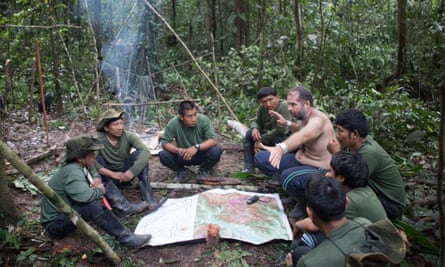
On a recent afternoon, dozens of Indigenous men, several still in their teens, arrived at EVU’s headquarters in Atalaia do Norte to sign up to defend their ancestral lands from a four-pronged assault: poachers and fishing gangs encroaching from the north, drug traffickers from the west, goldminers from the east and cattle ranchers from the south.
“What they did to Bruno and the journalist was so painful but we’re going to continue fighting our enemies until they can no longer bear it,” vowed the youngest of the group, 18-year-old Clenildo Kulina.
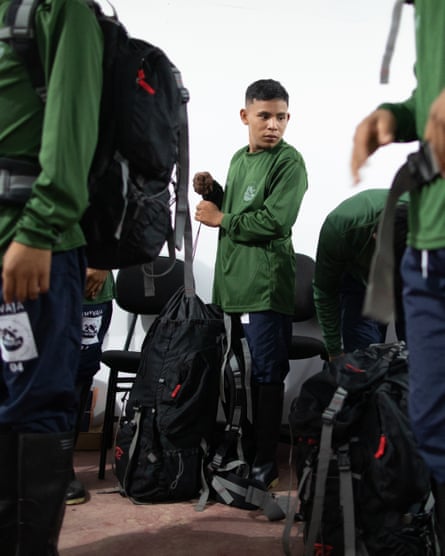
Kulina grew up in a village on the Curuçá River, five days from Atalaia by boat, and it was there that he first met Pereira. The Indigenous expert, then working for Brazil’s Indigenous protection agency, Funai, was passing through at the start of one of his gruelling expeditions into the Javari’s jungles and ventured into the rainforest with Kulina’s uncle and cousin to search for isolated Indigenous tribes they hoped to protect.
Kulina was too young to join them and Pereira’s death robbed him of the chance to work with the strapping indigenista once he came of age. “But now I have this opportunity and I’m going to take advantage of it,” he said. “If I have to die, it will be for our people.”

Another young volunteer, Marcelo Chawan Kulina, had also come hoping to secure a place on one of the patrol teams that Pereira regarded as crucial to the survival of the Javari’s tribes. “I feel anxious and a little bit afraid,” the 25-year-old admitted. “It’s dangerous. When you confront the invaders, they shoot.”
But he said he saw no other way of resisting the illegal forces obliterating the natural resources of his rainforest home; an immense sprawl of coffee-coloured rivers and dense jungle on Brazil’s northwestern fringe. “They kill our animals and steal the fish from our lakes. I want this to stop,” he said. “These invaders have seized control of Indigenous territory.”
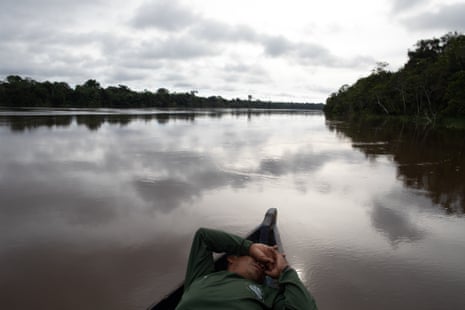
The suspects
As a new generation of Indigenous activists position themselves on the frontline of a war to protect nature, prosecutors are working to bring the killers of Pereira and Phillips to justice.
Three fishers are being held in high-security prisons awaiting trial for murder: two brothers called Amarildo and Oseney da Costa de Oliveira and a third man, Jefferson da Silva Lima.
Amarildo, who is better known as Pelado, and Da Silva Lima first confessed to killing Phillips and Pereira after chasing them down the Itaquaí River as they returned from a four-day reporting trip to the entrance of the Javari valley Indigenous territory, though they later changed their story .
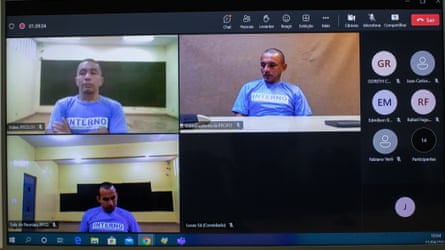
“Why the fuck did you do this?” a third brother asked Pelado and Da Silva Lima as he helped them hide the victims’ belongings and bodies, according to a confession made by Pelado 11 days after the killings.
Nearly a year later, the answer to that question remains confused. Pelado initially told police he killed Pereira in a fit of anger, infuriated by EVU’s “persecution” of the fishers who live along the Itaquaí. But recently he offered a different version, claiming they had only shot at Pereira after the Indigenous activist opened fire on them as they went out to fish. He denied the crime was premeditated or ordered by someone else.
Speaking outside a courtroom in the city of Tabatinga, where a judge is considering whether the three men should face trial by jury, Oseney’s wife, Raimundo Nonato, insisted her husband was innocent.
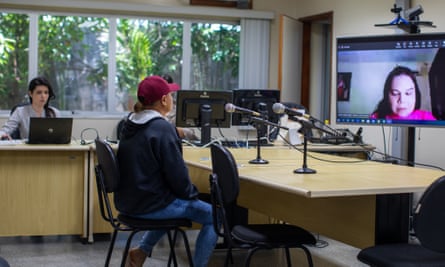
Nonato claims Pelado and Da Silva Lima opened fire in a “moment of rage” prompted by Pereira’s dogged pursuit of fishers and poachers. Yet some suspect more powerful and dangerous forces lay behind the killings.
Federal police have named a fourth man – a shadowy local mobster nicknamed Colombia – as the suspected mastermind. Colombia, who reportedly holds Peruvian, Colombian and Brazilian citizenship, is behind bars and reportedly being investigated for allegedly bankrolling the illegal fishing gangs that plunder the Javari Indigenous territory.
Nonato cried over her husband’s detention. “Everything has come crashing down,” she sobbed, voicing regret over Phillips’ killing.
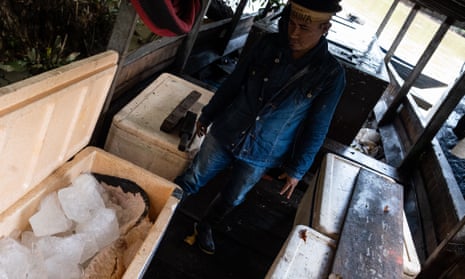
A history of violence
Nonato’s life story speaks to the profound and enduring tensions between the Javari’s Indigenous and non-Indigenous inhabitants that provided the backdrop to last year’s killings.
Decades ago, her father moved to the region from Brazil’s impoverished north-east to work as a rubber tapper, at a time when the government was urging citizens to occupy what it falsely called a “land without men”.
Nonato was born in 1984, in a riverside hamlet called Camboa, as a ferocious conflict raged between the Indigenous communities and non-Indigenous incomers.
Press cuttings from that era paint a brutal picture of the deadly tit-for-tat skirmishes between the Korubo, an Indigenous people known as the caceteiros (club carriers), and the loggers and rubber tappers pushing deeper into their lands.

Korubo warriors used long wooden cudgels to bludgeon invaders to death. Loggers retaliated using shotguns and “gifts” of poison-laced food. Indigenous people were “gunned down like wild pigs”, one Indigenous expert, Rieli Franciscato, told the Brazilian newspaper O Globo, which estimated that hundreds of Korubo had been killed.
Growing up in the jungle, Nonato caught fleeting glimpses of the Korubo. “They shave half their heads. They’re funny-looking and really strong,” she remembered. “I was scared of them.”
Nonato said she felt relief when, in the late 1990s, Brazil’s government began expelling non-Indigenous outsiders, in an attempt to end the conflict and protect Indigenous groups from deadly violence and disease. The eviction forced her family to move closer to Atalaia, where there were schools. “Today, thank God, two of my brothers have been to university,” she said.
Many local people, however, resented being kicked out of the Indigenous territory, believing they were being robbed of the right to make a living off the Javari’s abundant fish stocks, wildlife and wood.
“We make our own laws here,” Atalaia’s then mayor, Marco Antônio Monteiro, told O Globo in 1996. “The Javari valley belongs to us and we will not allow the area to be sealed off.”
The following years saw a succession of armed attacks on a government protection base at the conflux of the Itaquaí and Ituí Rivers, one of the main entry points to the Indigenous enclave. The violence reached a crescendo with the 2019 killing of Maxciel Pereira dos Santos, an Indigenous protection agent who had worked closely with Pereira and who was shot dead in Tabatinga. His assasins were never caught and the case appeared to have been forgotten until last year’s killings thrust it back into the spotlight.
As the Javari valley was closed to outsiders, Pelado’s family relocated to Ladário, the first riverside village outside the territory’s border, on the banks of the Itaquaí.
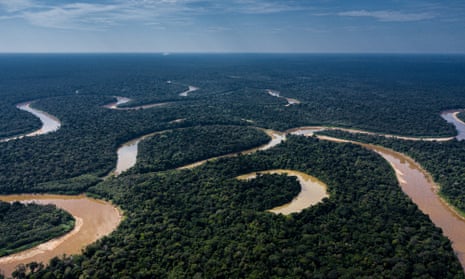
From jungle guide to poacher
One of the last photographs of Phillips – recovered by forensic scientists from one of Pereira’s mobile phones – was taken in Ladário, two days before the killings, and shows the journalist sitting by the river in rubber flip-flops and a blue T-shirt, chatting to a fisher who is Pelado’s brother-in-law.
Pelado’s uncle, Raimundo Bento da Costa, 53, remembers an energetic and solicitous teenager who played in football tournaments on Ladário’s large riverside pitch. “He wasn’t the kind of guy who went around fighting and rowing with people,” Costa said. “He was a pretty normal guy.”
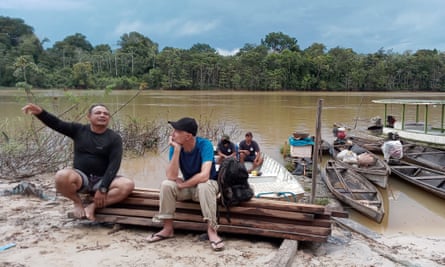
In 2002, when Pelado was 21, he was hired to take part in an expedition into the Javari commanded by Orlando Possuelo’s father, the legendary explorer Sydney Possuelo, in search of an Indigenous group known as the flecheiros, or arrow people.
Scott Wallace, an American journalist and author who took part in that 76-day mission, first met Pelado on the Itaquaí, upstream from where Pereira and Phillips were killed, and described “a very amiable, upbeat kid who laughed a lot, and seemed to get along with everyone”.

Pelado was also an expert backwoodsman who built jungle camps and cleared fallen trees as the expeditionaries advanced into the wilderness.
“He’d just gotten married and his wife was expecting their first son, so he was really excited about the chance to join the expedition … and the family he was looking forward to raising,” Wallace said, recalling Pelado’s exhilaration at the prospect of catching sight of the uncontacted flecheiros. “It would be a story that he could tell to his children and grandchildren and he [thought he] would be greatly respected,” said Wallace, who today teaches journalism at the University of Connecticut.
But over the coming years, Pelado became a source of fear, not pride, along the Itaquaí, according to local sources.
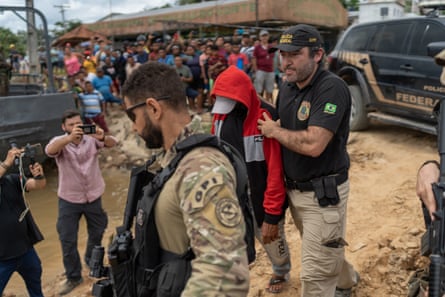
His uncle said Pelado started organising illegal 15- to 20-day fishing expeditions into Indigenous lands, sneaking past the Funai guard post with half a dozen armed collaborators. By packing wooden boats with tonnes of pirarucu fish and a river turtle called the tracajá, Pelado could quadruple an investment of perhaps 10,000 reais (equivalent today to about £1,600).
Costa sensed his nephew had become consumed by greed. “We never considered him particularly aggressive or anything like that. But he got too big for his boots. He wanted to be the boss. He wanted to rule over that area,” he said.

Bruno Pereira and the EVU’s activists stood in the way of that dream, blocking Pelado’s forays into the rainforest and reporting his activities to the police. “So he thought: if we kill him, everything will be fine,” Costa said, voicing disgust at his nephew’s “cowardly” crime.
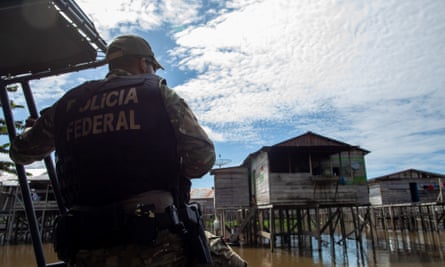
Leonardo Schmitt, the federal agent now running Atalaia’s floating police base, expressed confidence that such a crime would not be repeated after his team’s arrival, but cautioned against underestimating “the nerve and audacity of these criminals”.
Schmitt speaks from experience. In 2010, two colleagues – Mauro Lobo and Leonardo Matzunaga Yamaguti – were shot dead by Peruvian and Brazilian drug traffickers on the Solimões River after intercepting a boat smuggling 300kg of coca paste. “They died defending the Amazon too,” Schmitt said. Five men were later jailed for those murders.
A Rio native, Schmitt is in the Javari as part of an operation named after the tucandeira, a wasp-like Amazonian ant notorious for its excruciating sting. “I think it’s a pretty appropriate symbol [of our mission] because it’s a big, carnivorous ant said to have the most powerful sting on Earth,” Schmitt said as he toured the waters around Atalaia do Norte in a speedboat, flanked by agents carrying assault rifles. “Our intention is to have a similarly striking presence.”

‘The land is part of our family’
EVU’s Indigenous activists have chosen a different Amazonian symbol to represent their battle to remember and resist. In the storage room of their Atalaia HQ, four cherry-coloured planks of maçaranduba redwood lie on the floor, the components of a memorial cross that friends plan to erect beside the Itaquaí.
“It’s the heart of the forest,” said Carlos Travassos, an Indigenous specialist who is helping to train EVU’s patrol teams. “The idea is to mark … the place where they were murdered … to ensure it’s never forgotten.”
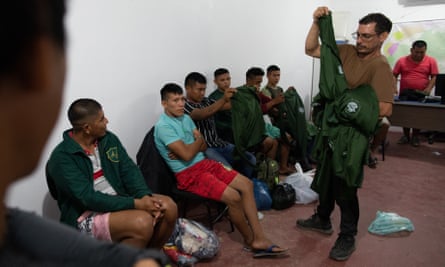
One evening last month, the storeroom was a hive of activity as EVU’s newest volunteers prepared to journey into the rainforest for a five-day training session that would determine who made the cut. “I’m a rookie … but I’m not afraid. I feel courage,” said Txema Matis, 23. “The Indigenous are a courageous lot.”
Paulo Marubo, a prominent Indigenous leader who was close to Pereira, offered a pre-mission pep talk. “The land is part of our family. The forest is part of our family [and] it’s up to each of us to defend our territory. Let’s get to work!”
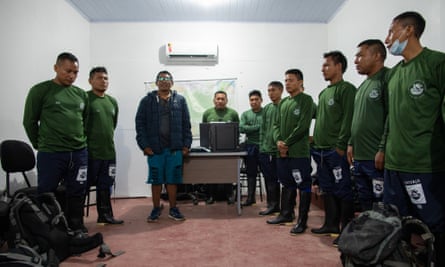
The next day, the 25-strong crew donned green uniforms and rubber boots and headed to the dilapidated port where Pereira and Phillips began their final journey. They cast off into the Javari’s turbid, dolphin-filled waters, heading west along the border with Peru, past an abandoned Peruvian police base that was attacked and torched by armed raiders five months before Phillips and Pereira were killed.
Up on deck, Clenildo Kulina admitted there were risks involved in joining the struggle in which Phillips, Pereira, Maxciel Pereira dos Santos and countless others have died. But the teenager said he felt Pereira’s spirit guiding him as he embarked on what he hoped would be the first of many missions to ensure their ideas – and the Javari’s rainforests and rivers – remained alive.
“He’s here with us, isn’t he?” Kulina said of Pereira, as a flight of swallows swooped over the bow. “We can feel that he is right here, among us – and I think that’s where he will always remain.”


